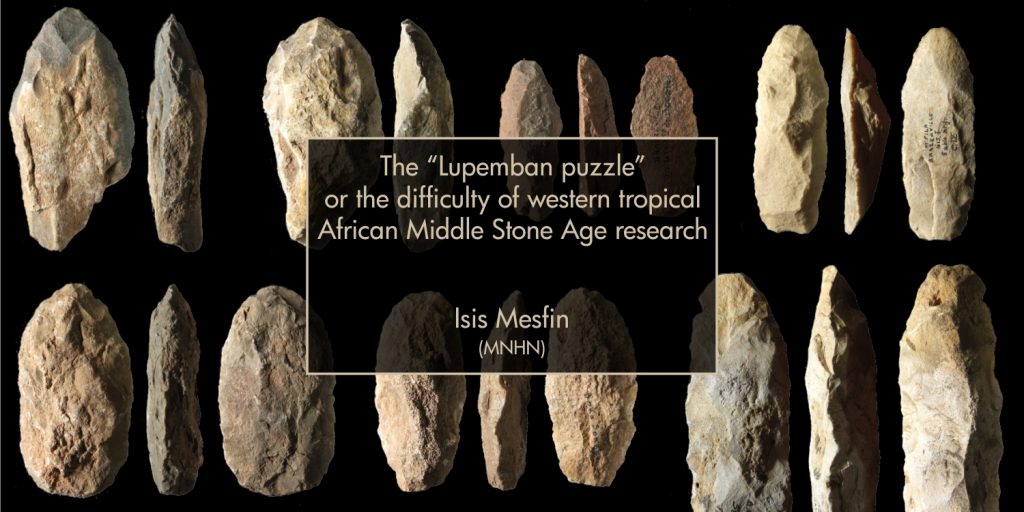The “Lupemban puzzle” or the difficulty of western tropical African Middle Stone Age research
A joint-seminar IFAS-Recherche | School of Geography, Archaeology and Environmental Studies

Thursday 18 July 2019
13:15 | Origins Building, Wits University, Archaeology Seminar Room (Room 212)
Hunter-gatherers groups ability to adapt to tropical rainforest in the Paleolithic has been, and to a certain extent, still is a matter of debate. While research intensified in inter-tropical regions, the prehistory of the Congo Basin remains misunderstood after more than one century of academic study. A regional lithic industry attributed to the Middle Stone Age, the Lupemban, has been empirically considered as a technological adaptation to African tropical rainforest. This hypothesis of a “forest industry” – which emerged since the 1920s – is based on the presence of diversified heavy duty shaped tools and on the Congo Basin bottom valleys sites localization. But it lacks scientific consistence such as chronological, stratigraphic and palaeoenvironmental context, as well as technological evaluation. Nowadays, the Lupemban complex in Central Africa remains blurred and prehistorical research projects are rare. This situation prevents the integration of this geographical crossroad in a Panafrican Middle Stone Age, as well as understanding the diffusion of modern human behaviors. Indeed, blade production, backing, hafting or pigment-use are also associated to Lupemban assemblages.
During this talk, we would like to remind the historical background of prehistorical research in the Congo Basin and to present a technological and morphometrical analysis of several Lupemban assemblages stored in the Muséum National d’Histoire Naturelle in Paris, in order to try to initiate a re-thinking of what the Lupemban complex may be.

Isis Mesfin is a PhD student from the Muséum National d’Histoire Naturelle(UMR7194 – Histoire Naturelle de l’Homme Préhistorique-MNHN-CNRS). Her PhD research focuses on Early Stone Age coastal settlements in South-Western Africa where human occupations are still poorly documented despite the richness of archaeological remains. She applies a technological and morphometrical approach to lithic assemblages in order to characterize Early Pleistocene Acheulean industries present in this region. Another part of her research focuses on the reappraisal of the Congo Basin Middle Stone Age, more precisely, the Lupemban Complex comparing lithic assemblages gathered during the 20th century.
On 4 July, she participated in the ASAPA 2019 Conference to present her studies on “Raw material procurement and management in an Acheulean coastal context: the case of Dungo IV (Benguela Province, Angola)”.
The ASAPA 2019 biannual conference and her fieldwork in Angola are supported by IFAS-Recherche.

